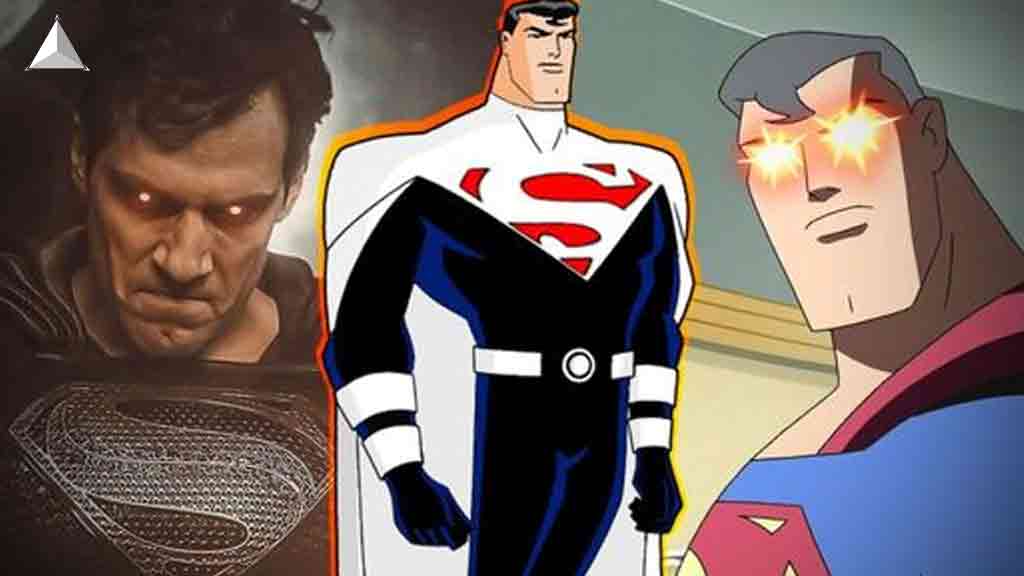Superman’s Most Brutal Attack Was More Evil Than His Snyderverse Or Injustice Kills
Superman’s abilities & imperviousness to harm made it tempting for creators to take him to the dark side:

Creators were constantly tempted to take Superman to the dark side because of his superior talents and seeming invulnerability to damage. Kal-El is defined as much by his compassion and concern for life as he is by his tremendous powers, and the prospect of his “going rogue” is sometimes too appealing to refuse. Such scenarios have been increasingly common in the last decade as DC has turned darker, giving its iconic superhero a very disturbing downside. It’s an effective technique of communicating the enormity of Superman’s moral responsibility while also assisting in the telling of more intriguing stories about him. However, it also highlights how scary a character like him can be. The most famous example is the Injustice video games and animated adaption, which depict a parallel reality in which Superman becomes a cruel tyrant after being deceived into murdering Lois Lane. In Man of Steel, Zack Snyder had him take his own life, and the many edits of Justice League reflect what may have happened if he lost control. They’re all scary stories in and of themselves. Their main source of inspiration, though, is the Diniverse and an episode of Justice League Unlimited that helped set the standard. In Season 2, Episodes 11 and 12, “A Better World,” Superman embraces evil in a disturbing way.
The Plotline Of Episodes “A Better World:”

The first two episodes of Justice League Unlimited take place in a parallel reality in which Lex Luthor murders the Flash and becomes President of the United States. Rather than allowing him to launch a nuclear attack, Superman confronts him and eventually burns him to death with his heat vision. With that moral line crossed, he and the rest of the Justice League take control of their planet in the manner of Injustice. They convert the planet into a fascist dictatorship, eventually discovering the “primary” Diniverse, where the rest of the episode takes place, and call themselves the “Justice Lords.” The plot is based on various earlier DC concepts, most notably the Crime Syndicate and The Authority series released by Wildstorm. It eventually led to the Cadmus narrative in Justice League Unlimited (also inspired by the comics), in which Amanda Waller and other government forces attempted to foresee and prevent a similar Justice League takeover, with devastating effects. The premise was powerful because it demonstrated how the death of someone like the Flash – depicted as the team’s jokester – might turn someone like Clark into a monster.
Both Justice League Unlimited episodes lean heavily into the quiet terrors of the Justice Lords’:

Both Justice League Unlimited episodes focus on the silent terrors of the Justice Lords’ Earth, particularly when Lord Batman convinces his prime counterpart that their rule is the greatest way to control the planet. It also emphasizes the humanity of characters like the Flash, and how the loss of his optimism and good cheer may drive someone like Kal-El to take harsh action. It eventually pays off in the Cadmus arc, when most of the original Justice League allow themselves to be jailed to show that they aren’t above the law. Justice Lord Superman, on the other hand, is unrepentant, and the most heinous aspect of his dictatorship emerges in the most unexpected way. Arkham Asylum in his universe is a paragon of peace and efficiency, where Poison Ivy prunes the plants with shears and even the Joker is polite. As it turns out, Superman used his heat vision to lobotomize them, leaving them alive but docile and artificial. Every convict is a shuffling zombie with an identical set of scars on their forehead from Kal-El’s work.
So why is this the most brutal attack on Superman?

It astounds because it goes far beyond Injustice’s immediate, ferocious violence and the Snyderverse’s soul-searching sorrow. On those occasions, Kal-El was assassinated in the midst of battle or with the lives of millions at stake. The Arkham scenario in “A Better World” is even more ruthless and calculated, implying a purposeful and systematic dehumanization of all who oppose him. Even when pitted against the DC universe’s deadliest villains, the approach is unsettling, and while it eventually strengthens the prime Superman’s sense of meticulous self-oversight, it still speaks to moral depravity on the level of Darkseid and his ilk. Kal-El travels there because no one can stop him, and while his better self recognizes the cost, no other iteration of the character pays it with such glee or carelessness. When combating monsters, Justice Lord Superman transforms into one himself and has no regrets.
Source: CBR.com





